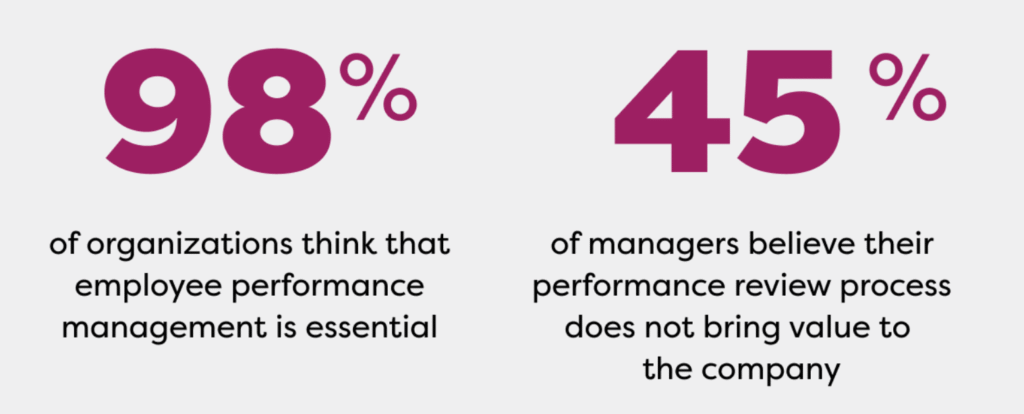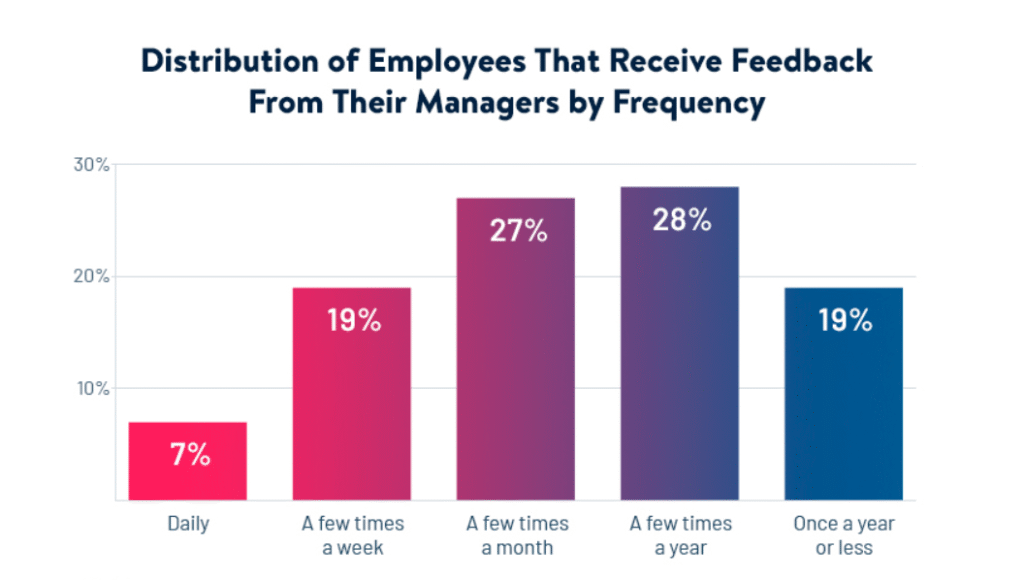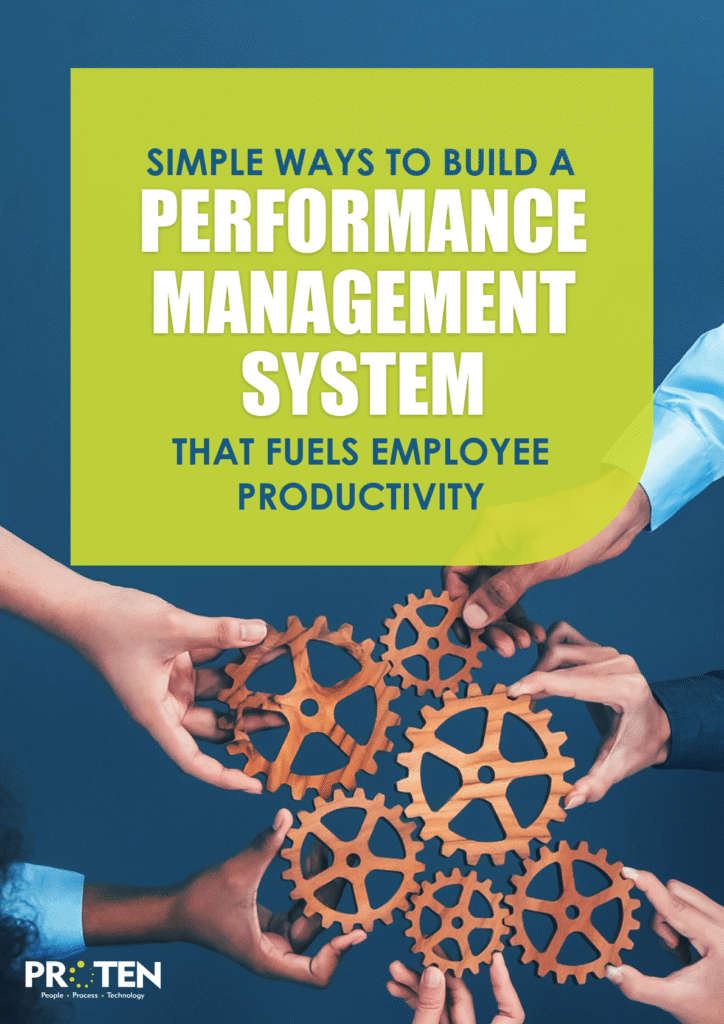
Source: FolksHR
In today’s competitive business landscape, employee productivity and engagement are critical for organizational success. However, traditional performance management systems often fail to foster continuous improvement, transparency, or motivation, leading to decreased employee morale and productivity.
According to Gartner, 59% of employees think that traditional performance reviews have “no impact” on their personal performance. This reality makes it vital to explore the common pitfalls of outdated performance management systems and present organisations with practical, simplified approaches to building a dynamic system that fuels employee productivity. By focusing on frequent feedback, goal alignment, and accessible technology, organizations can develop a performance management system that enhances employee engagement and promotes high performance.
The Importance of a Productive Workforce
High-performing employees drive innovation, create value, and contribute to overall business growth. Yet, many organizations struggle to maintain high productivity levels, often due to ineffective performance management systems. In fact, according to a report by Kluger and DeNisi, most conventional reviews make performance worse one-third of the time.
According to Impraise, 22% of employees have called in sick rather than face a performance review, 35% have complained to their peers, and a shocking 15% have even cried. This is often the result of complex and rigid performance management systems. These systems often prevent managers and employees from engaging meaningfully with performance goals, feedback, and improvement strategies.
Why Traditional Performance Management Fails
Despite the importance of effective performance management, 95% of managers are not satisfied with traditional performance management processes according to SHRM. From research, many traditional systems fall short due to the following reasons:
A. Infrequent Feedback
A Clear Company report from 2020 stated that 4 out of 10 workers are actively disengaged when they get little to no feedback. A workplace culture of infrequent interaction between managers and employees results in missed opportunities for growth and development.
In a report by PwC, nearly 60% of survey respondents reported that they would like feedback on a daily or weekly basis—a number that increased to 72% for employees under age 30. Managers should never be too busy to evaluate performance and provide feedback as this has incredible impact of workplace performance.

Source: SHRM
B. Lack of Clear Goals and Alignment
65% of employees want more clearly defined goals, tasks and responsibilities (FolksHR). When goals are unclear or misaligned with the organization’s objectives, employees may feel disconnected and uncertain about their contributions to overall success. This misalignment can lead to disengagement and reduced productivity.
C. Overly Complex Systems
According to a Deloitte report, 58% of companies report that performance management systems are not an effective use of time. Many performance management systems are weighed down by complicated processes, multiple layers of approval, and excessive paperwork. This complexity can make the system feel burdensome rather than supportive, reducing its effectiveness and discouraging employees from engaging with it.
D. Absence of Developmental Focus
Traditional performance management systems often prioritize past performance over future growth, limiting employees’ opportunities to learn and develop new skills. This lack of developmental focus can hinder productivity and career progression.
Developing a Simplified, Productive Performance Management System
In a report by SHRM, more than 9 in 10 managers are not happy with the current annual review process, and almost 9 in 10 HR leaders stated the process does not give accurate information. To build a performance management system that fosters productivity, organizations need to focus on simplicity, alignment with goals, regular feedback, and developmental opportunities. Here’s a breakdown of key components:
A. Embrace Continuous, Real-Time Feedback
Implement a culture of continuous feedback, where managers provide real-time insights into employees’ performance. Companies adopting continuous performance feedback significantly outperformed competition at a 24% higher rate, according to a Betterworks report. The same report also discovered that organizations with continuous performance processes are 39% better at attracting top talent, and 44% better at retaining talent.
Weekly or bi-weekly check-ins, project debriefs, and informal feedback sessions allow employees to address issues and make improvements regularly. Using a digital tool to log feedback can also help both employees and managers track progress.
B. Set SMART Goals Aligned with Organizational Objectives
Use the SMART framework (Specific, Measurable, Achievable, Relevant, Time-bound) to set individual goals that align with organizational objectives. Managers should work with employees to define roles and set meaningful goals that contribute directly to the organization’s success. Implement quarterly reviews to reassess and adjust goals as needed.
C. Simplify Processes with User-Friendly Technology
Currently, 45% of managers do not see value in the review systems used (Willis Towers Watson). To have an effective appraisal system, adopt a user-friendly performance management tool that facilitates goal tracking, feedback, and reporting. A cloud-based system with intuitive features can streamline the process, enabling employees and managers to focus on performance rather than paperwork.
This reduces administrative burden, allows for easy tracking and accessible data, and encourages engagement with the system.
D. Integrate Learning and Development Opportunities
According to a report by Entrepreneur, 89% of employees would be opened to some form of learning and development incorporated into the performance management process. Organisations should encourage a shift to a development-oriented model that includes skill-building and career development as core components of the performance management process.
71% of employees who believe that their boss can identify their abilities are more engaged and enthusiastic at work (Gallup), this makes it imperative for managers to identify areas for improvement and work with employees to create individual development plans that align with their career goals and company needs.
E. Foster a Culture of Recognition and Rewards
As seen in a recent study from Havard Business School, Workers who receive consistent bonuses or incentives are eight times more engaged than those who don’t.
Organisations should incorporate regular recognition and rewards into the performance management system. Acknowledge high-performing employees through formal recognition programs, bonuses, or even informal shoutouts. Recognizing achievements—whether big or small—boosts morale and motivates employees to sustain high performance.
Implementation Plan
To implement these solutions, follow these steps:
1. Pilot a Continuous Feedback Model: Begin with a small team to test real-time feedback and refine the process before scaling it organization-wide.
2. Launch Training on SMART Goals: Train managers and employees on setting SMART goals and align them with the organization’s objectives.
3. Choose and Roll Out a Digital Platform: Select a user-friendly performance management software and offer training for seamless adoption.
4. Introduce Development Plans and Recognition Programs: Develop structured development plans and implement recognition practices to foster growth and motivation.
5. Monitor and Refine: Regularly assess the system’s effectiveness, gather feedback, and make adjustments as necessary to improve the process continually.
Expected Outcomes
By implementing these simplified approaches, organizations can expect the following outcomes:
– Higher Employee Productivity: Regular feedback makes employees nearly three times more likely to be engaged in their work. This outcome was clearly demonstrated in a study by Betterworks that showed that companies adopting continuous performance feedback significantly outperformed competition at a 24% higher rate. Real-time feedback and aligned goals drive continuous improvement, enhancing overall productivity.
– Improved Engagement and Retention: A supportive, growth-oriented system boosts morale, engagement, and retention rates as reported in the same Betterworks report that stated that organizations with continuous performance processes are 39% better at attracting top talent, and 44% better at retaining talent..
– Better Alignment with Business Goals: Clear, aligned goals help employees see their role in achieving organizational success, creating a stronger connection to the company’s mission. According to Hiredna, Companies and organizations with greater-than-average levels of employee engagement reported 27% higher earnings and 38% higher productivity.
– More Efficient Processes: The two main concerns with traditional performance reviews are that the effort is too high and the usefulness is too low. A simplified system reduces administrative work, allowing managers and employees to focus on performance and development.
The Case for Continuous Performance Management System
Performance statistics indicate that most reviews turn out to be more painful than effective. A report by Keka showed that 90% of performance reviews are ineffective. This is because conventional performance management systems focus primarily on recent happenings and criticism. Therefore, they damage employees’ self-worth and confidence at work.
As evidenced by the companies with the best performance management practices, if employees receive continuous and precise feedback, they are happier at work. An effective performance management system can significantly enhance employee productivity by making feedback, goal-setting, and recognition easy and accessible.
According to a report by Betterworks, some areas where companies with continuous performance management outperform traditional ones are, increased productivity (66%), motivating the entire workforce (65%), and achieving top goals of the organization (64%). By shifting focus from traditional, complex methods to streamlined, continuous processes that prioritize alignment and development, organizations can create a performance management system that fuels employee engagement and drives sustainable growth.
By following the strategies outlined in this report, organisations can establish a performance management system that is not only productive and engaging but also aligned with their overarching goals, fostering a high-performance culture for the future.

